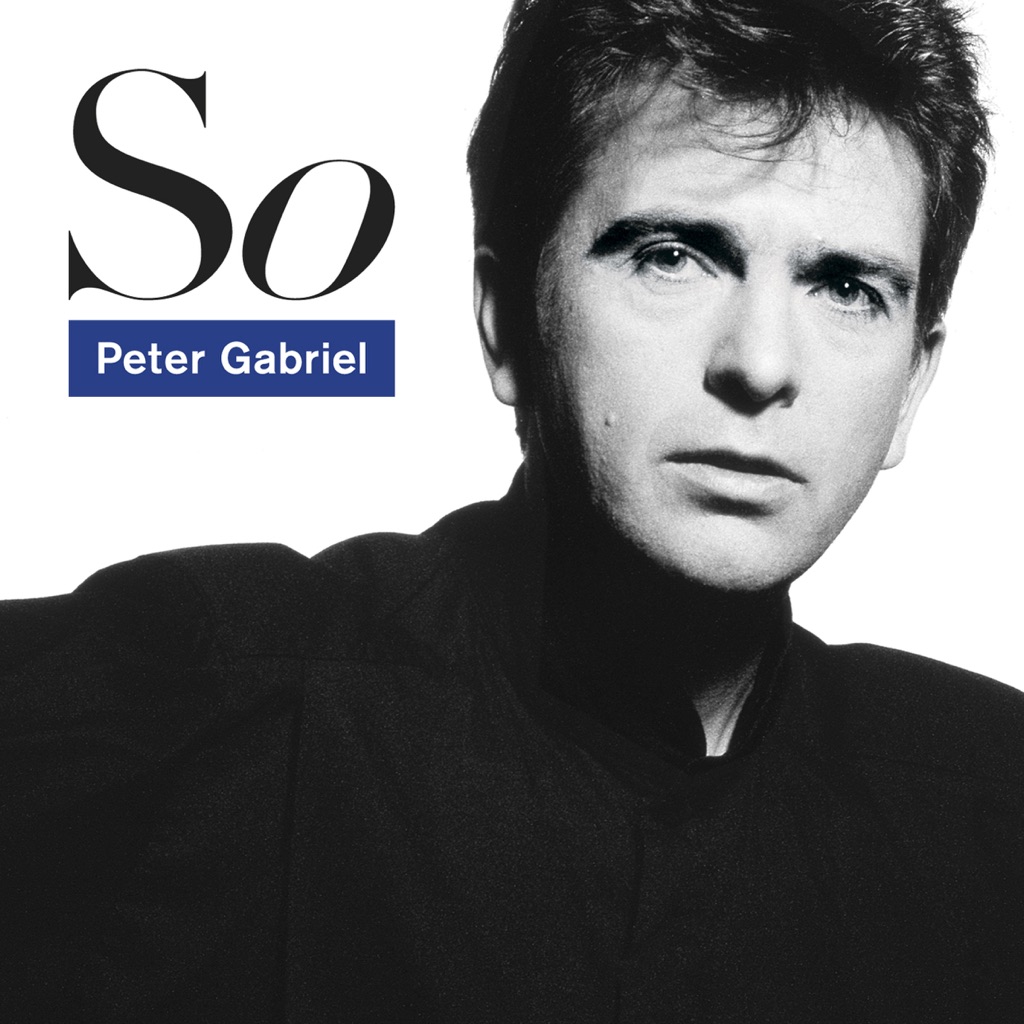
So
Exploring his love of R&B and soul music for the first time, Peter Gabriel reinvented himself on 1986’s *So*, his fifth album. It’s the album that transformed the once shadowy, sinister, secretive art-rocker—by now in his mid-thirties—into an unlikely pop sensation. For the first time, Gabriel’s songs were stripped of their layers of sonic trickery and cubist textures, while producer Daniel Lanois coaxed the singer into finally letting his drummers use cymbals and hi-hats again. And, for the first time, Gabriel’s face even appeared unobscured on the album cover. The resulting album would go platinum five times over, turn Gabriel into an MTV fixture, and grant the singer a unique burst of total pop dominance—one that was never experienced at this level by fellow travelers like David Bowie, David Byrne, Bryan Ferry, or even post-Police Sting. The album’s lead single, recorded almost as an afterthought, was “Sledgehammer,” an avant-garde R&B throwback powered by big synths and even bigger horns. A chart-topping hit in the US, “Sledgehammer” moves along via a one-take recording of drummer Manu Katché’s incredible groove (he’s been a staple of Gabriel’s band ever since). Similarly, the combustible funk-rock of “Big Time” features a big beat from Police drummer Stewart Copeland, as well as veteran Gabriel drummer Jerry Marotta tapping on Tony Levin’s bass with drumsticks. The success of “Sledgehammer” served as a gateway to the rest of *So*, exposing millions to Gabriel’s sui generis world of arresting ballads, vaporous atmospheres, and omnivorous appetite for global rhythms. Though absolutely drenched in synthesizers, “Don’t Give Up” is something of Gabriel’s attempt at Americana, taking inspiration by Depression-era photographs. He originally sought Dolly Parton for the duet, but ultimately tapped Kate Bush, who supplies one of the album’s most intimate and chilling performances. The slowed-down Brazilian forró rhythms of “Mercy Street” floats like a fog, while “In Your Eyes” features the gymnastic, ecstatic voice of Senegalese mbalax superstar Youssou N’Dour, along with Katché’s absolutely wild drum fills. *So* was nothing short of a sensation, staying on the US album charts for an astonishing 93 weeks. Gabriel ended up nominated for four Grammys, three American Music Awards, and eleven MTV Video Music Awards—and the wildly ambitious video for “Sledgehammer” is regarded as a peak moment of the entire art form of music video itself. *So* would become even deeper engrained into the cultural firmament after John Cusack threw a boombox over his head to play “In Your Eyes” in the 1989 film *Say Anything*.
The first of Peter’s studio albums to have a proper title, 'So' was a watershed release in his career. Its marriage of the artistic and the commercial made for an indisputable success, with the album quickly sitting atop the album charts on both sides of the Atlantic. Aside from some intriguing collaborations – with Laurie Anderson on 'This Is The Picture', Kate Bush on 'Don’t Give Up' and Youssou N’Dour on 'In Your Eyes' – it was the unity of singer, band and producer that makes 'So' such a crucial record in the Gabriel canon. Originally released 19 May 1986.
Each Sunday, Pitchfork takes an in-depth look at a significant album from the past, and any record not in our archives is eligible. Today, we revisit Peter Gabriel’s 1986 art-pop masterpiece, a turning point in the commercial globalization of pop music.
For the first time since 1992,Rolling Stone'sdefinitive classic returns to the scene, completely updated and revised to include the past decade's artists and sounds. When it comes to sorting the truly great from the merely mediocre, the enduring from the fleeting,The New Rolling Stone Album Guideprovides music buffs and amateurs alike with authoritative guidance from the best voices in the field. Filled with insightful commentary, it not only reviews the most influential albums of all time, but also features biographical overviews of key artists' careers, giving readers a look at the personalities behind the music.This fourth edition contains an impressive -- 70 percent -- amount of new material. Readers will find fresh updates to entries on established artists, hundreds of brand-new entries on the people and recordings that epitomize the '90s and the sounds of the 21st century -- from Beck to OutKast to the White Stripes and beyond -- along with a new introduction detailing changes in the music industry.Celebrating the diversity of popular music and its constant metamorphoses, with thousands of entries and reviews on every sound from blues to techno,The New Rolling Stone Album Guideis the only resource music lovers need to read.

